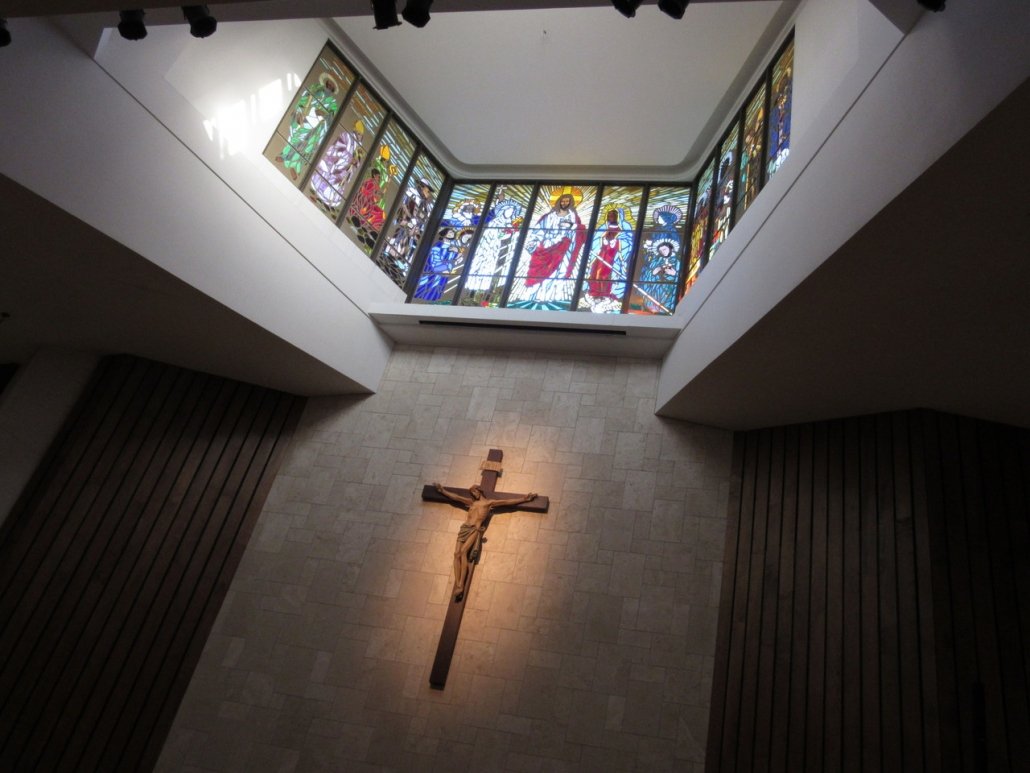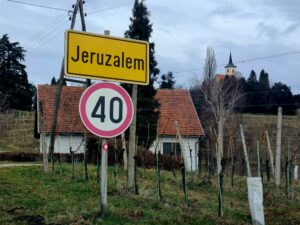I have a vague memory of visiting Phoenix AZ many moons ago. That it’s a vague memory says a lot about my impression of the place. I think we were supporting some Irish dancers who had travelled to the city for a feis. I know we met up with the brother of a girl I’d gone to school with at home and he’d taken us to a cowboy place where we sat on saddle-shaped stools and slithered down a pole to get into the restaurant. And we ate rattlesnake. That’s it. That’s all I remember about Phoenix AZ.
This time, we were visiting good friends in Scottsdale and they had our number.
Musical Instruments Museum Phoenix AZ
First up was the MIM – the Musical Instruments Museum. This was more for himself that for me, as I don’t have a musical note in my body. Billed as the ‘World’s Only Global Musical Instrument Museum’, it counts some 6800 instruments collected from around 200 countries and territories in its permanent exhibition. It has about 13,600 musical instruments and associated objects all told but changes out the exhibits on a fairly regular basis. Admission includes a set of headphones. As you approach an exhibit, you get to hear what’s playing on the screen. I was particularly taken with the Vanuatu Women’s Water Music.
The Recycled Orchestra from Paraguay also caught my attention.
[The] violin, like many in the orchestra, is made out of cans, wooden spoons and bent forks. One of the ensemble’s cellos uses an oil drum for its body. String pegs are created from detritus like old cooking utensils and even the heel of a worn-out women’s shoe. Drum heads are made from old X-ray film, held in place with copious amounts of packing tape. Fifteen-year-old Tobias Armoa plays a saxophone made out of a drainpipe, melted copper, coins, spoon handles, cans and bottle caps.
We only had two hours, but you could spend two hours alone in the Africa section. The two-day pass option that I questioned when we arrived now made sense. There’s an Experience room where you can play some of the instruments and a Performers room where they focus on greats like Johnny Cash and John Lennon. The place is huge and the exhibit exceptionally well done.



I was a little concerned when, in the America section, I took a hearing text and could only register sound at 8000 MHz. But that’s apparently normal, given my age. It’s a remarkable place. Don’t shortchange yourself: set aside at least a morning or an afternoon. There’s a café on site so you can take a break from the wandering and then get back to it. If you’re a real enthusiast, get the two-day pass.
MIM. 4725 E Mayo Blvd, Phoenix, AZ 85050. Open every day from 9 am to 5 pm. Admission $20.
Violins of Hope
Violins of Hope is a Jewish initiative that is visiting Phoenix this February and March. The brainchild of Amnon Weinstein, a luthier from Israel, it’s a memorable testimony to a story rarely told.
Amnon Weinstein has spent the last two decades locating and restoring violins that were played by Jewish musicians during the Holocaust. […] One of the most respected violin makers in the world, Amnon became determined to reclaim his lost heritage. He started locating violins that were played by Jews in the camps and ghettos, painstakingly piecing them back together so they could be brought to life again on the concert stage. Although most of the musicians who originally played the instruments were silenced by the Holocaust, their voices and spirits live on through the violins that Amnon has lovingly restored. He calls these instruments the Violins of Hope.
Amnon’s son, Avshalom (Avshi) is a luthier in Istanbul, was at the Grand Canyon University with four of the violins to talk to us about the project. He said that when he was in school in Israel, only one boy in his class had grandparents – and he was from Yemen. I’d never thought about that before – a whole generation of children who grew up without grandparents.
Trained musicians were in high demand in the camps, forced to play as work parties left each morning and returned each day. And, of course, for the entertainment of their captors. They were looked after slightly better than most. The entire women’s orchestra in Birkenau walked (or was carried) out when the camp was liberated. He told us about how many of the ‘forced’ musicians never wanted to see or play their instruments again. To be turned against music for the memories it evoked… so sad.
In the 1980s Weinstein had made his first encounter with a violin from the Holocaust. A young man brought him one that had belonged to his grandfather for repair. When Weinstein opened it up, he found black powder inside, soon realising that it was ashes from the crematoria of Auschwitz, where the grandfather had last played the instrument.
Avshi had four violins with him, at least one of which had been played in Auschwitz. We heard it played that night by Moshe Bukshpan, Executive Director of Red Rocks Music Festival. It was his first time playing the instrument and he reflected, too, on how many of his family had perished in the Holocaust. It was an emotional performance.

We learned about the Klezmer musicians who were untrained, unable to read sheet music and therefore of no use to the Nazis. As a form it music, it was nearly wiped out during the Holocaust but enjoyed a revival 1970s. Avshi had one beautiful instrument from the Czech Republic (Schönbach, now Luby) that had a lovely inlaid six-pointed star.
The Oscar-nominated movie, Defiance, starring Daniel Craig, is one that had passed me by but is now high on my list of ones to watch.
Jewish brothers in Nazi-occupied Eastern Europe escape into the Belarussian forests, where they join Russian resistance fighters, and endeavour to build a village, in order to protect themselves and about one thousand Jewish non-combatants.
Avshi’s maternal grandfather was one of the brothers, Tuvia Bielski. What an inspiration.
If you’re in Phoenix over the next month or so, check out Violins of Hope. And if you’re anywhere else in the world, keep an eye out for it.
Sunday mass at St Theresa Phoenix AZ
When I said I’d like to get mass on Sunday, our lovely host RR suggested going to hear her son play the drums at St Theresa. Drums? In a church? At mass? This I had to see. The guitar, sax (played by a Polish woman who as Army Reserve plays in the Army band), and drum ensemble accompany the pianist and an 8-voiced choir. The musicians are paid (yes, paid) by the parish and most of them play in other parishes, too. The priest, Fr Joachim Adeyemi (Fr Joe), ranked up there with Fr Hilary Tagliaferro, whom I heard preach in Malta a few weeks back. From the diocese of Ilorin, Nigeria, Fr Joe was introduced to the parish in 2015 as ‘an outgoing, articulate, personable and energetic priest’, all of which I can testify to. It’s been a while since I’ve seen a priest enjoy saying mass as much. Perhaps they all do, but so few show it. His enjoyment was contagious. And the music did him justice.
If you’re in search of an entertaining mass some Sunday, with great coffee and doughnuts afterwards, check out St Theresa at 5045 E Thomas Rd, Phoenix, AZ 85018. And if you’re involved in parish work anywhere, and want to get your numbers up, considering hiring professional musicians. They’re worth the investment.

Thanks so much to our hosts RR and AP. It was a wonderful weekend. So great to reconnect. I’ll think of Phoenix more fondly in future.







2 Responses